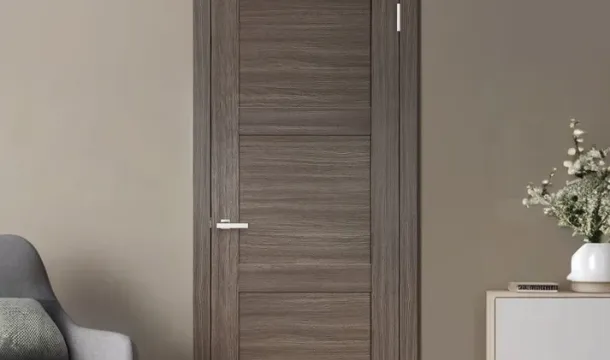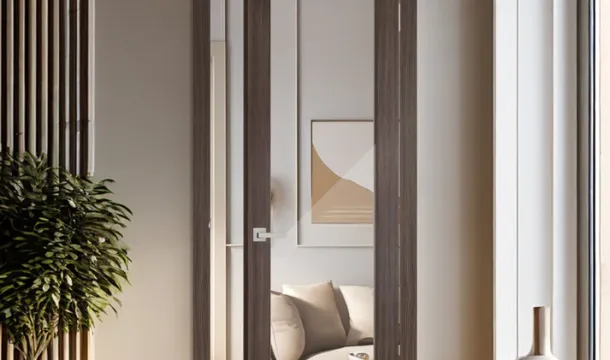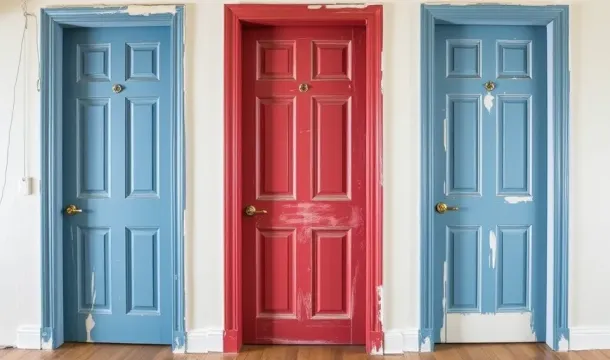Key Points to Review Before Installing a Glass Paneled Door
Popular Articles
- Choosing the Perfect Interior Doors for Your Canadian Home
- A Complete Guide to Choosing Interior Doors for Canadian Homes
- The Challenges of Painting Interior Doors
- Understanding Interior Doors and Their Role in Your Home
- The Perfect Blend of Reliability and Design: Interior Doors with Italian "Sandwich" Technology
Verify the glass type and safety ratings before installation. Tempered or laminated glass is mandatory for residential doors to meet Canadian building codes and reduce injury risks. Confirm compliance with CSA A440 standards, which regulate performance and energy efficiency.
Measure the door frame precisely to avoid gaps that cause drafts or misalignment. Account for expansion due to seasonal temperature changes common in Canadian climates, especially in regions with wide temperature fluctuations.
Consider the hardware compatibility, including hinges and locks designed specifically for heavier glass doors. Reinforced frames and rust-resistant materials like stainless steel or brass improve durability and security over time.
Check insulation values (U-factor and SHGC) of the glass panel to maintain interior comfort and lower heating costs during harsh winters. Double or triple glazing options can significantly improve thermal performance compared to single-pane alternatives.
Measure Door Frame Accurately
Use a steel tape measure to record the height, width, and depth of the door frame at three points: top, middle, and bottom for width; left, center, and right for height. Note the smallest measurements to ensure the new glass-paneled door fits without forcing or gaps.
Check the squareness by measuring diagonally from corner to corner. If diagonal measurements differ by more than 1/8 inch (3 mm), the frame may require adjustment before installation. Uneven frames can cause misalignment and operational issues with the door.
Account for any existing trim or molding thickness in your measurements if you plan to reuse them. Also, verify the wall thickness around the frame to select an appropriate door jamb depth that prevents gaps between wall and frame.
Record both rough opening dimensions (framing size) and finished opening dimensions (after drywall or plaster). Glass-paneled doors often need precise clearancesallow a gap of approximately 1/8 inch (3 mm) on each side for shimming and expansion.
If replacing an old door, remove it fully before measuring. This avoids errors caused by worn hinges or warped frames. Take photos of the current setup to cross-check hinge placements and hardware locations against your new door specifications.
Choose Suitable Glass Type
Select laminated glass for enhanced safety and noise reduction. This type consists of two or more glass layers bonded with a durable interlayer, preventing shattering upon impactideal for high-traffic areas or homes with children.
Tempered glass offers superior strength compared to standard glass, breaking into small granular pieces instead of sharp shards. It's recommended for exterior doors or rooms exposed to temperature fluctuations due to its thermal resistance.
Consider Privacy and Light Transmission
Frosted or textured glass options balance natural light with privacy, suitable for bathrooms, bedrooms, or offices. Etched patterns or obscure finishes reduce visibility without significantly darkening the room.
Energy Efficiency and Insulation
Double-glazed insulated glass units (IGUs) improve thermal performance by trapping air or inert gas between panes, reducing heat loss during Canadian winters and minimizing cooling costs in summer.
Low-emissivity (Low-E) coatings reflect infrared energy while allowing visible light through, enhancing energy efficiency without compromising illumination. Choose these coatings when selecting glass types to optimize comfort year-round.
Check Security and Privacy
Install laminated or tempered glass with a security rating to reduce the risk of break-ins. These glass types resist shattering into sharp fragments, slowing down forced entry attempts. Consider adding a security film that reinforces the pane without compromising visibility.
Use multi-point locking systems compatible with glass-paneled doors to increase resistance against forced opening. Standard single locks may not provide adequate protection when combined with large glass surfaces.
For privacy, opt for frosted, tinted, or textured glass options that obscure direct sightlines while maintaining natural light flow. Alternatively, install blinds or curtains designed specifically for door panels to adjust privacy as needed.
Ensure that the door frame and hinges are reinforced and equipped with anti-lift devices to prevent removal of the door despite the glass panel's vulnerability. Metal frames often provide better security support than wooden ones in this regard.
Popular Articles
- Choosing the Perfect Interior Doors for Your Canadian Home
- A Complete Guide to Choosing Interior Doors for Canadian Homes
- The Challenges of Painting Interior Doors
- Understanding Interior Doors and Their Role in Your Home
- The Perfect Blend of Reliability and Design: Interior Doors with Italian "Sandwich" Technology

Choosing the Perfect Interior Doors for Your Canadian Home

A Complete Guide to Choosing Interior Doors for Canadian Homes
